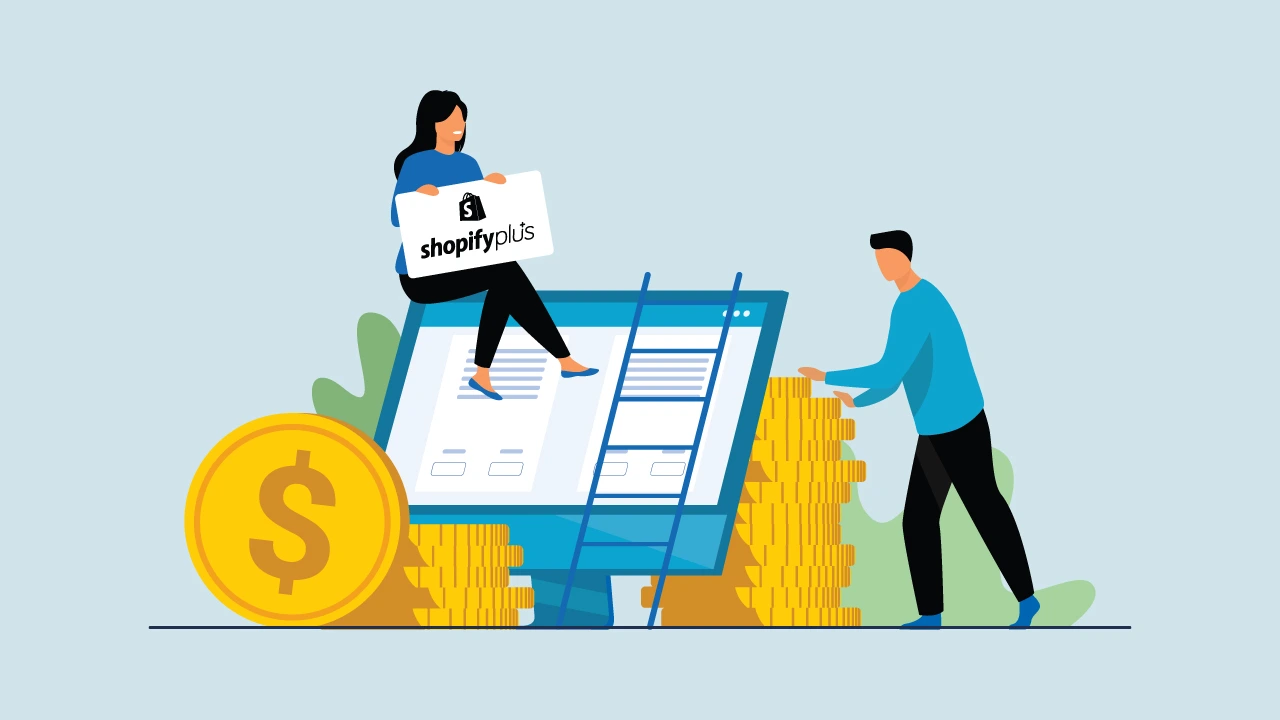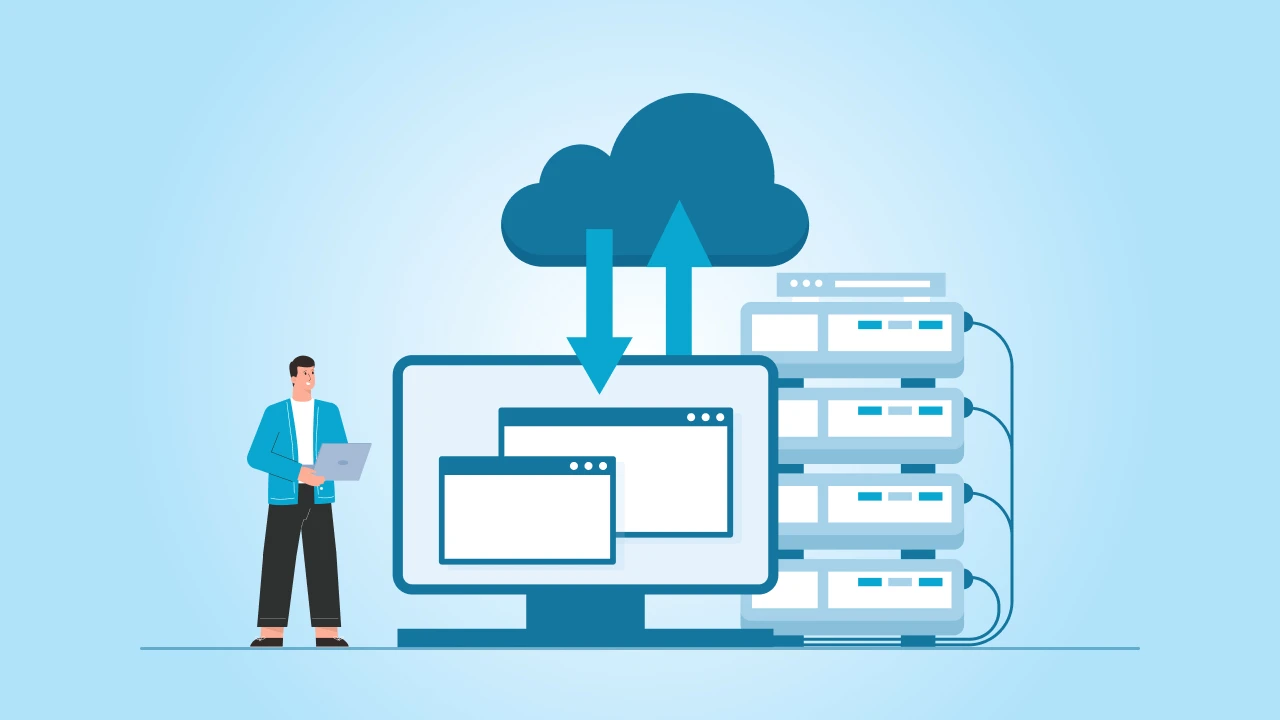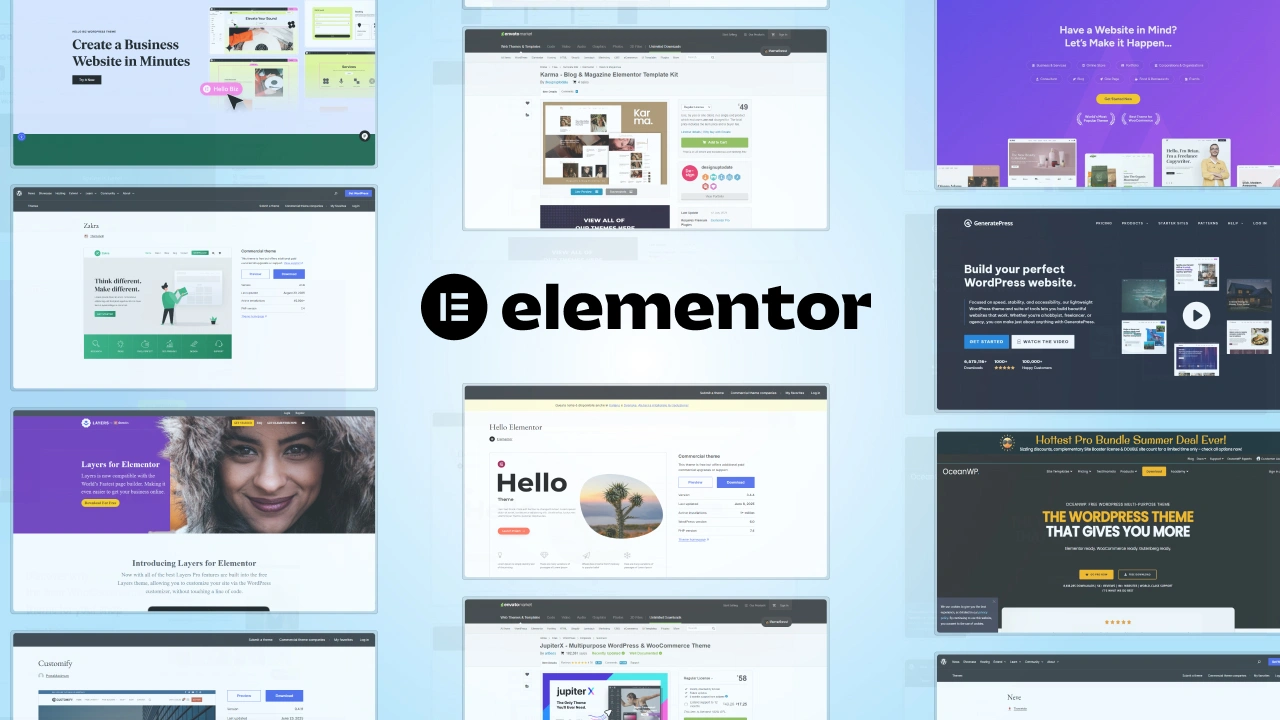How much does Shopify Plus cost? Well, Shopify Plus pricing starts at $2,000 per month.
That’s just the base fee, but your actual cost can be much higher once you factor in third-party transaction fees, third-party apps, custom development, and other hidden costs.
It’s important to consider the potential costs associated with operating a Shopify Plus store, as these can significantly impact your budget.
If that sounds frustrating, you are not alone. Many business owners looking to upgrade to Shopify Plus struggle to get a straight answer about the real costs. That’s because pricing isn’t just about the monthly fee—it also depends on things like:
- Your sales volume (Shopify Plus charges a percentage-based fee if your revenue grows beyond a certain point)
- Transaction fees (especially if you use a third-party payment processor)
- Custom apps and development (essential for many Shopify Plus merchants)
- International selling costs (currency conversion fees, taxes, etc.)
In this guide, we are cutting through the confusion and breaking it all down clearly and transparently—no vague estimates, no sales fluff.
By the end, you will know exactly:
- The real cost of Shopify Plus in 2025
- What hidden fees to watch out for
- How it compares to other customizable eCommerce platforms
- Whether it’s truly worth the investment for your business
If you have been wondering whether Shopify Plus is the right move—or just trying to avoid any unexpected expenses—you are in the right place.
Let’s get into it.
⏰ 60-Second Summary
- Shopify Plus starts at $2,000/month, but actual costs are much higher when you factor in transaction fees, security and compliance costs, and paid services like third-party apps and development.
- Transaction fees can add up—if you don’t use Shopify Payments, Shopify charges 0.15% per transaction, plus credit card processing fees.
- Hidden costs to watch out for: Currency conversion fees, automation tools, multi-store pricing ($2,000 per store), and compliance costs for businesses selling internationally.
- Shopify Plus vs. competitors: BigCommerce Enterprise offers lower pricing, Magento allows more customization but is expensive, and Salesforce Commerce Cloud is for massive enterprises.
- Is Shopify Plus worth it? It could be a great investment if your store makes $1M+ per year and needs custom checkout, automation, or international expansion. Otherwise, Advanced Shopify might be the better choice.
- Before upgrading: Negotiate Shopify Plus pricing, cut down on unnecessary paid services, and calculate if the savings from lower transaction fees justify the cost.
Shopify Plus Base Pricing (2025): What You Are Really Paying
Alright, let’s talk numbers.
The official starting price for Shopify Plus is $2,000 per month. This is the base subscription fee, but for many businesses, the actual cost goes well beyond this due to the variable platform fee, which adapts based on a business’s revenue.
How Shopify Plus Pricing Works
Unlike Shopify’s standard plans, which have fixed prices, Shopify Plus uses a revenue-based pricing model that adapts to your revenue and business model. This means:
- $2,000/month minimum fee for businesses making up to $800,000 in monthly revenue
- If your revenue exceeds $800,000 per month, Shopify Plus charges 0.25% of your monthly sales, up to a maximum cap of $40,000 per month
📌 Example:
- If your store makes $500,000/month, you still pay the flat $2,000/month.
- If your store makes $1,000,000/month, you pay 0.25% of that = $2,500/month.
- If your store makes $10,000,000/month, you are capped at $40,000/month.
This means that as your business grows, your Shopify Plus fees increase proportionally—which is something many store owners don’t realize upfront.
What’s Included in the $2,000 Shopify Plus Fee?
At this base price, you get:
- Unlimited staff accounts (vs. limited accounts on standard Shopify plans)
- Advanced automation tools (Shopify Flow, Launchpad, and Scripts)
- Dedicated Shopify support team with a Merchant Success Manager
- Custom checkout & script editor for better conversion optimization
- More API access for headless commerce setups
- Wholesale & international store expansion features
This all sounds great, but here’s the catch: The $2,000/month only covers the platform itself. You still need to factor in transaction fees, app costs, development fees, and maintenance expenses, which can significantly increase your total Shopify Plus bill.
How Shopify Plus Pricing Compares to Standard Shopify Plans
If you are wondering whether Shopify Plus is worth it, let’s quickly compare it to Shopify’s lower-tier plans:
| Plan | Monthly Cost | Transaction Fees | Staff Accounts | Advanced Features |
|---|---|---|---|---|
| Shopify Basic | $39 | 2.00% | 2 | Limited |
| Shopify | $105 | 1.00% | 5 | Some |
| Shopify Advanced | $399 | 0.50% | 15 | More |
| Shopify Plus | $2,000+ | 0.25% (capped at $40K/month) | Unlimited | Full suite |
For small and mid-sized online stores, Advanced Shopify ($399/month) might be a better deal unless you need Plus-specific features like wholesale, automation, or advanced customization.
Let’s fine-tune your store’s setup, cut unnecessary expenses, and ensure you are getting unbeatable value for high-growth success.
The Real Cost of Shopify Plus: What Goes Beyond the $2,000 Fee?
So, we have established that Shopify Plus pricing starts at $2,000 per month. But here’s the thing—that’s just the base fee. If you are running a serious eCommerce business, your actual monthly cost will be much higher once you factor in everything else.
A lot of businesses sign up for Shopify Plus thinking they will only be paying $2,000 a month, but then they quickly realize that transaction fees, app subscriptions, development costs, payment processing fees, and other expenses add up fast.
I’ll explain how.
1. Transaction Fees:
One of the biggest hidden costs of Shopify Plus is the transaction fee. Here’s how it works:
- If you use Shopify Payments, you don’t pay additional transaction fees, but you still pay credit card processing fees (which we’ll cover in a moment).
- If you use a third-party payment provider (like PayPal, Stripe, or Authorize.net), Shopify charges an extra 0.15% per transaction on top of your processor’s fees.
📌 Example: If you make $1,000,000/month in sales and use PayPal instead of Shopify Payments, Shopify will charge you an extra $1,500 per month (0.15%) just for processing through a third party.
💡 How to Save: Stick with Shopify Payments whenever possible to avoid this extra cost.
2. Credit Card Processing Fees:
Even if you avoid Shopify’s transaction fees by using Shopify Payments, you will still pay credit card processing fees. These are the standard rates Shopify charges based on your location. Additionally, it’s important to consider in-person card fees as part of the overall transaction costs, especially if you use Shopify POS for in-person sales.
In the U.S., the Shopify Payments credit card fees are:
- 2.15% + $0.30 per transaction (online credit card payments)
- 2.4% per transaction (in-person payments with Shopify POS)
📌 Example: If you sell $500,000 per month, and your average order value is $100, you will have around 5,000 transactions per month.
Your credit card processing fees would be: (2.15% of $500,000) + (5,000 x $0.30) = $10,750/month
Yes, you read that right—over $10K per month just in credit card fees. This is why many large online stores negotiate custom processing rates with Shopify.
💡 How to Save: If you process a high volume of transactions, negotiate a lower rate with Shopify Payments or explore bulk processing options.
3. App & Plugin Costs:
Shopify Plus gives you access to some powerful tools, but many advanced features still require paid apps. Most high-growth stores end up using multiple apps to enhance their store’s functionality.
Common Shopify Plus Apps & Their Costs:
- Klaviyo (Email & SMS Marketing): $1,500+/month (scales with contacts)
- Rebuy (AI-Powered Upsells & Personalization): $500–$2,000/month
- Recharge (Subscriptions & Recurring Payments): $300–$1,000/month
- Shogun or GemPages (Custom Landing Pages): $200–$1,000/month
- Advanced Analytics Tools (Lifetimely, Triple Whale, Daasity):
$100–$500/month
📌 Example: If you are running a high-revenue Shopify Plus store, you could easily spend $2,000–$5,000 per month on essential apps alone.
💡 How to Save: Carefully audit your apps and remove anything that isn’t driving revenue. Some features can be built custom instead of using paid apps.
4. Development & Customization Costs:
One of the best things about Shopify Plus is that it allows for more customization and can accommodate custom needs, but that often means hiring Shopify developers or Shopify development services agencies to build the features you need.
Estimated Development Costs for Shopify Plus Stores:
- Basic customizations (minor tweaks, layout changes): $2,000–$5,000
- Advanced custom checkout (Shopify Scripts): $5,000–$15,000
- Headless commerce setup (React, Vue.js front-end): $50,000+
- Full custom Shopify theme development: $10,000–$30,000
📌 Example: If you want a fully customized Shopify Plus online store with a headless commerce setup and advanced personalization, you could be looking at a $50,000+ upfront investment.
💡 How to Save: Start with a premium Shopify theme and only invest in custom development when absolutely necessary.
5. International & Multi-Store Costs:
Shopify Plus allows you to create multiple store versions for different countries, but this comes with extra costs.
Additional Costs for International Selling:
- Multi-store setup (separate Shopify Plus instances): $2,000/month per store
- Currency conversion fees: 1.5% per transaction (if using Shopify Payments)
- Duties & import taxes: Varies by country
- Translation apps (Weglot, Langify): $50–$500/month
📌 Example: If you want a U.S. store, a U.K. store, and a European store, you could end up paying $6,000/month just for multiple Shopify Plus instances—before transaction and conversion fees.
💡 How to Save: Instead of creating multiple Shopify Plus online stores, consider using Shopify Markets, which allows international selling without separate storefronts.
Total Estimated Shopify Plus Costs Per Month
Now that we have broken down all the extra expenses, let’s look at what a typical Shopify Plus store actually spends per month:
It’s important to check up-to-date rates for accurate cost estimation, especially for transaction fees associated with Shopify Payments. Contact Shopify to obtain the latest fee structures applicable to your specific location.
| Expense | Estimated Cost |
|---|---|
| Shopify Plus Pricing: Base Fee | $2,000+ |
| Third-party Transaction Fees (If Not Using Shopify Payments) | $1,500+ |
| Credit Card Processing Fees | $10,000+ (depends on revenue) |
| Apps & Plugins | $2,000–$5,000 |
| Development & Customization | $5,000–$50,000 (one-time or ongoing) |
| International Store Fees | $2,000–$6,000 |
| TOTAL ESTIMATED COSTS | $15,000+ per month (varies based on business size) |
📖 Also Read: Shopify Plus vs Shopify Advanced
Hidden Fees and Unexpected Expenses
You have seen the base Shopify Plus pricing ($2,000/month) and the extra fees that pile up fast—transaction fees, credit card processing, apps, and development costs.
But there are even more hidden costs that can catch businesses off guard. A variable platform fee-based structure can also lead to unexpected expenses, as fees vary depending on revenue and specific business models.
These are the expenses that Shopify doesn’t always highlight upfront, and they can make a big difference in your total investment.
Let’s break them down so you don’t get hit with unexpected surprises.
1. Cross-Border Selling Fees (Currency Conversion, Duties, and Taxes)
If you sell internationally, Shopify Plus isn’t as “global-friendly” as it might seem. While Shopify Markets helps with localization, there are still costs you need to consider.
Key Cross-Border Fees:
- Currency Conversion Fees – If you use Shopify Payments, Shopify charges 1.5% per transaction (2% if you are outside the U.S.) when converting currencies.
- Duties & Import Taxes – If you are shipping internationally, you may need to collect and remit duties, which can add complexity and cost.
- Multiple Shopify Plus Stores – If you want dedicated storefronts for different countries (e.g., a UK store and a U.S. store), you will need to pay $2,000/month for each Shopify Plus instance.
📌 Example: If you generate $500,000/month in international sales, Shopify’s 1.5% conversion fee means you are paying $7,500/month just for currency conversion.
💡 How to Save:
- Use Shopify Markets instead of creating multiple Shopify Plus stores.
- Price your products in local currencies to minimize conversion fees.
- Consider third-party payment providers that offer lower currency conversion rates.
2. Headless Commerce Costs (If You Go Custom-Built)
One of Shopify Plus’s big selling points is headless commerce, where you separate your storefront from the backend using custom technology (like React or Vue.js). It gives you total control over design and speed—but it’s expensive.
Hidden Costs of Going Headless with Shopify Plus:
- Development Costs: A fully headless Shopify Plus setup can cost $50,000+ upfront and $5,000+ per month for maintenance.
- Hosting Fees: Unlike Shopify’s standard themes, you’ll need a third-party host like Vercel, AWS, or Netlify ($500–$3,000/month).
- Custom API Limits: Shopify Plus gives you higher API limits, but they are still not unlimited, meaning you may need workarounds that increase development costs.
📌 Example: If you run a large brand that switches to a headless Shopify Plus setup, you might spend $100,000+ in the first year alone.
💡 How to Save:
- Only go headless if you truly need full customization (most stores don’t).
- Consider progressive web apps (PWAs) instead of full headless setups.
- Work with Shopify Plus-certified agencies that specialize in headless builds to avoid overpaying.
3. Automation Tools (Shopify Flow, Scripts – Costs vs. Value)
Shopify Plus offers built-in automation tools like Shopify Flow and Shopify Scripts, but many businesses end up hiring developers to use them effectively.
Shopify Plus Automation Costs:
- Shopify Flow: Free but requires setup and testing—may need a developer.
- Shopify Scripts: Lets you customize discounts, shipping, and payments at checkout, but needs coding knowledge—custom scripts can cost $2,000–$10,000+.
- Shopify Functions (New for 2025): Shopify’s replacement for Scripts; still requires coding expertise and potential extra web development costs.
📌 Example: If you want to offer complex discount structures or dynamic checkout logic, you may need to hire a Shopify Plus developer ($150–$250/hour) to write custom Scripts.
💡 How to Save:
- Use pre-built Shopify Scripts whenever possible.
- Train your team to use Shopify Flow instead of hiring developers.
- Use apps like Rebuy or Bold Discounts instead of custom scripting.
4. Cost of Migrating to Shopify Plus (Replatforming Expenses)
If you are moving from Magento, BigCommerce, WooCommerce, or another platform to Shopify Plus, migration costs can be huge.
Common Shopify Plus Migration Costs:
- Data Migration (Products, Orders, Customers) – $5,000–$20,000
- Custom Theme Development (If Needed) – $10,000–$30,000
- App Setup & Integrations – $2,000–$10,000
- SEO Rebuild (To Avoid Losing Rankings) – $5,000+
📌 Example: A mid-sized store moving from Magento to Shopify Plus could easily spend $50,000+ on migration alone.
💡 How to Save:
- Use Shopify’s official migration services to reduce costs.
- Train your team to use Shopify Flow instead of hiring developers.
- Use apps like Rebuy or Bold Discounts instead of custom scripting.
5. Exit Fees (What Happens If You Want to Leave Shopify Plus?)
One of the biggest hidden traps of Shopify Plus is how difficult (and expensive) it can be to leave.
Things to Consider Before Canceling Shopify Plus:
- 12-Month Contract Minimum – Shopify Plus requires a one-year contract, so if you decide to leave early, you may still have to pay for the full term.
- Rebuilding Costs – If you leave Shopify Plus for another platform, you’ll need to rebuild your entire store—which could cost $50,000+.
- Loss of Shopify Scripts & Flow – These features don’t transfer to other Shopify plans, so your store’s functionality might break.
📌 Example: If you decide Shopify Plus isn’t right for you after 6 months, you may still owe $12,000 for the remainder of your contract.
💡 How to Save:
- Negotiate a flexible contract before signing.
- Test your store on Advanced Shopify ($399/month) before committing to Plus.
- Plan your exit strategy before migrating—just in case.
Shopify Plus vs. Competitors: Which One is Worth It?
Shopify Plus isn’t the only option for enterprise eCommerce. Let’s compare it to BigCommerce Enterprise, Magento (Adobe Commerce), WooCommerce Enterprise, and Salesforce Commerce Cloud to see which one offers the best value.
Shopify Plus Pricing vs. Others
| Platform | Best For | Starting Cost | Customization | Ease of Use |
|---|---|---|---|---|
| Shopify Plus | Fast-growing brands | $2,000/month+ | Moderate | Very Easy |
| BigCommerce Enterprise | B2B & high-volume sellers | $500–$2,500/month | High | Moderate |
| Magento (Adobe Commerce) | Large businesses needing full control | $22,000/year+ | Extreme | Hard |
| WooCommerce Enterprise | Businesses with dev teams | $5,000+/year | Extreme | Hard |
| Salesforce Commerce Cloud | Large enterprises | $300,000+/year | High | Hard |
Is Shopify Plus Worth It? (ROI & When to Upgrade)
Honestly, for some businesses, it’s a game-changer, while for others, it’s an unnecessary expense.
Let’s break down who should upgrade, who shouldn’t, and how to calculate if Shopify Plus pricing makes sense for your business.
Who Should Consider Shopify Plus?
1. High-Revenue Stores ($1M+ Annual Revenue)
If your store is making $1M or more per year, higher volume businesses switch to Shopify Plus because it pays for itself through reduced transaction fees (0.25%) and powerful automation tools that save time and increase sales.
2. Brands Needing Advanced Checkout Customization
If you need custom discount logic, subscription options, or one-click upsells, Shopify Plus lets you customize the checkout process (something regular Shopify plans don’t allow).
3. Businesses Expanding Internationally
Shopify Plus makes selling globally easier with features like Shopify Markets, multi-store support, and localized checkouts.
4. B2B & Wholesale Businesses
If you are selling wholesale alongside direct-to-consumer (DTC), Shopify Plus includes a dedicated B2B portal to streamline bulk orders.
5. Fast-Growing Brands That Need Scalability
Shopify Plus is built for brands to scale fast, handling high traffic, flash sales, and automation without downtime.
Who Should NOT Upgrade to Shopify Plus?
1. Small Businesses Under $1M Revenue
If your store makes less than $1M per year, the extra cost isn’t justified. The Advanced Shopify plan ($399/month) has most of the features you need without the Plus price tag.
Better Option? Stay on Advanced Shopify until your revenue grows.
2. Stores That Don’t Need Custom Checkout Features
If you don’t need custom pricing, advanced discounts, or automation tools, you are paying for features you won’t use.
Better Option? Stick with Advanced Shopify and use apps instead of upgrading.
3. Low-Margin Businesses
If your profit margins are thin, Shopify Plus’s fees could eat into your profits.
Better Option? Focus on improving margins before considering Plus.
4. Businesses That Prefer Open-Source Platforms
If you need full customization and want to control hosting, Shopify Plus isn’t for you. Magento or WooCommerce might be better choices.
Better Option? Consider Magento or WooCommerce Enterprise for more flexibility.
How to Keep Shopify Plus Costs Low
Want to Save Money on Shopify Plus? Do This:
- Negotiate your Shopify Plus fee – Shopify is flexible for high-revenue brands.
- Reduce transaction & credit card fees – Use Shopify Payments and ask for a custom rate.
- Cut down on unnecessary apps – Many can be replaced with built-in Shopify features.
- Be smart about hiring agencies – Get multiple quotes and consider freelancers for small projects.
Conclusion
Shopify Plus is a powerful platform for online stores, but its true cost goes beyond the $2,000/month base fee. Businesses must also factor in security and compliance costs, paid services, and hidden expenses like transaction fees and third-party apps.
Even with advanced features and scalability, Shopify Plus pricing makes sense only for high-revenue stores that need customization, automation, and enterprise-level compliance. If your business can justify these costs and savings from built-in tools, it could be a smart investment. Otherwise, sticking with Advanced Shopify might be a better option.
Before upgrading, analyze your total expenses, negotiate pricing, and assess whether Shopify Plus will truly improve your store’s efficiency and profitability.
Schedule a free consultation with our Shopify experts to get a custom cost breakdown and tailored strategy for your store.





